Archive for March, 2013
Bladder infections in dogs
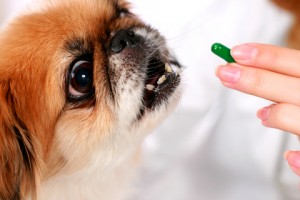 Cystitis is an infection of the lining of the bladder. Urinary stones can also result because of cystitis. Some causes can include increasing age, diabetes and being on corticosteroid therapy. In sexually active males, there may also be preexisting prostatitis. Dogs who go long periods of not urinating have an increased chance of getting a bladder infection.
Cystitis is an infection of the lining of the bladder. Urinary stones can also result because of cystitis. Some causes can include increasing age, diabetes and being on corticosteroid therapy. In sexually active males, there may also be preexisting prostatitis. Dogs who go long periods of not urinating have an increased chance of getting a bladder infection.
The main sign of bladder infection is painful urination. The urine may appear cloudy and have an abnormal odor. Females with cystitis may lick their hind area and have some vaginal discharge. The diagnosis is determined by your vet. If the urinalysis shows white and red blood cells and bacteria in the urine, then it’s Cystitis.
Cystitis should be treated promptly to prevent kidney infection. Your vet will prescribe an oral antibiotic that is effective against the bacteria. The antibiotic is given for two or three weeks, then the urine is checked again.
Remember, your pets count!
Listen to our great internet radio stations all weekend long!
THE EDGEWATER RADIO INTERNET NETWORK
Dog headed for Phoenix ends up in Ireland!
 Sometimes, we just can’t help it. We have to fly our pets from one place to another. They are put in a crate, tagged and put into a compartment separate from the seating area. Their owners have no contact with them until the plane lands. We hope and pray that they are on the correct flight and that they are safe. Here’s a rather disturbing story about a dog named Hendrix. The following article was taken from todays news on Channel 7 WABC Eyewitness news in New York.
Sometimes, we just can’t help it. We have to fly our pets from one place to another. They are put in a crate, tagged and put into a compartment separate from the seating area. Their owners have no contact with them until the plane lands. We hope and pray that they are on the correct flight and that they are safe. Here’s a rather disturbing story about a dog named Hendrix. The following article was taken from todays news on Channel 7 WABC Eyewitness news in New York.
WABC NEWS STORY 03/15/13
Edith Albach from Staten Island said she thought she put the 6-year-old dog on a flight from Newark to Phoenix last night. Her husband and daughter were waiting in Phoenix to get Hendrix, but the dog was not on the flight.
Edith got a call from the airline a few minutes before the plane landed to let her know the dog was on a plane to Shannon, Ireland instead.
The dog arrived safely in Ireland on Friday morning.
Edith says the airline could not explain how it happened, but offered her a refund.
She says she has not received an apology, and wants one. After all, it’s not just a suitcase of clothes that went missing, she says. It was their dog.
A spokesperson for United Airlines said they are reviewing the circumstances and they do regret what happened.
“We have apologized and offered a full refund. We want to make this right. We regret that he was boarded on the wrong aircraft. We are doing everything we can to take steps to make sure this doesn’t happen again,” Mary Clark, spokeswoman for United, said. “This is not typical of the service we provide to the more than 100,000 pets that travel with us every year. United is committed to make travel safe and comfortable for pets that travel with us.”
The Pet Safe staff is working to get Hendrix to Phoenix as originally planned, she said.
Stories like this make us very leery about putting a dog or cat on a plane. There’s a lot to be concerned about. I would never put an animal on a plane in the summer months. They could quickly become dehydrated sitting on a hot tarmac waiting to be loaded on to the aircraft.
Remember, your pets count!
Listen to our great internet radio stations on our internet radio network!
THE EDGEWATER INTERNET RADIO NETWORK
Core vs. non core vaccines for dogs and cats
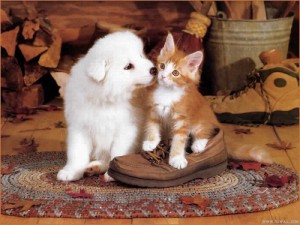 There are a lot more vaccines available today then there were about thirty years ago. It is absolutely necessary that dogs and cats receive the “core” vaccines.
There are a lot more vaccines available today then there were about thirty years ago. It is absolutely necessary that dogs and cats receive the “core” vaccines.
Core Vaccines for dogs are:
- distemper
- parvo
- adenovirus
- rabies
Care Vaccines for cats are:
- Panleukopenia
- Calici
- Herpes
- Rabies
Remember, your pets count!
Listen to our six great internet radio stations. They’re perfect at work!
THE EDGEWATER INTERNET RADIO NETWORK
Mistreating pets
![scared cat]](https://thepetproductguru.com/wp-content/uploads/2013/03/scared-cat-300x225.jpeg) Here is a quote from someone who admitted that he mistreated his pet.
Here is a quote from someone who admitted that he mistreated his pet.
I have a Persian cat which is about 2 years old now, when she was 1 and a half she came back from the vet, I carried her out of her cage and suddenly she flipped out and started scratching my hands and bit me hard. So without having control of what I did, I beat her. ever since that day she has not come close to me and every time i come close to her she hisses and like makes a weird sound like get away from me. Is there anything I can do to make her trust me and play with me again?
Ways that cats show affection
 Cats are very affection creatures but they show their affection very differently than humans or even dogs do. Some people may even be puzzled by ttheir signs of affection. For instance, cat purrs can mean several different things such as delight and love to concern. If your cat is purring, you can be sure that it’s a sign of love. When a cats cheek rubs against you, head-bumps your face, or pushes against you, he leaves his scented signature. These behaviors, termed bunting, are expressions of affection cats display to other cats, dogs-and their most favorite people. Believe it or not but cats show signs of love by spraying! So that urine over your new bedspread is a sign of affection. When you cat rolls around at your feet, he is also being affectionate. It could be a greeting or a solicitation that he wants to be pet. When a kitten plays, he is happy and enjoying his life. So never think that cats aren’t affectionate. The just have some odd ways of showing it!
Cats are very affection creatures but they show their affection very differently than humans or even dogs do. Some people may even be puzzled by ttheir signs of affection. For instance, cat purrs can mean several different things such as delight and love to concern. If your cat is purring, you can be sure that it’s a sign of love. When a cats cheek rubs against you, head-bumps your face, or pushes against you, he leaves his scented signature. These behaviors, termed bunting, are expressions of affection cats display to other cats, dogs-and their most favorite people. Believe it or not but cats show signs of love by spraying! So that urine over your new bedspread is a sign of affection. When you cat rolls around at your feet, he is also being affectionate. It could be a greeting or a solicitation that he wants to be pet. When a kitten plays, he is happy and enjoying his life. So never think that cats aren’t affectionate. The just have some odd ways of showing it!
Remember, your pets count!
Six great radio stations on our internet radio network
THE EDGEWATER INTERNET RADIO NETWORK
Dog cough’s and what they mean
 If your dog cough’s, don’t take it lightly. There are certain types of coughs that may be serious. Here’s a description of certain types of dog coughs and what they may mean.
If your dog cough’s, don’t take it lightly. There are certain types of coughs that may be serious. Here’s a description of certain types of dog coughs and what they may mean.
- A high, weak cough that sounds like gagging followed by swallowing and licking the lips could be tonsillitis and sore throat.
- A moist, bubbling cough indicates fluid or phlegm in the lungs could suggest pneumonia.
- A dry, hacking cough that is made worse after exercise or excitement could mean kennel cough.
- A spasm of prolonged coughing during the night or while lying down on the sternum could mean heart disease. This was the case with my dog who had heart failure.
Any cough could be serious so have them checked by your vet as soon as you can.
Remember, your pets count!
Hear some great music on our internet radio network.
THE EDGEWATER INTERNET RADIO NETWORK
Clicker training your puppy
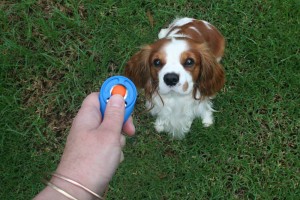 Clicker training is a very effective way to train your puppy. Here’s how it works. It allows your pup to remember doing something right rather than doing something wrong. Mark that behavior with a click and treat so he associates the sound with doing something right. The clicker simply signals to your pup that he did something right. Then give him verbal praise.
Clicker training is a very effective way to train your puppy. Here’s how it works. It allows your pup to remember doing something right rather than doing something wrong. Mark that behavior with a click and treat so he associates the sound with doing something right. The clicker simply signals to your pup that he did something right. Then give him verbal praise.
Here’s how to explain the click to your puppy.
- Fill a shallow dish with treats.
- Get comfortable on the floor with the dish within reach but so the pup can’t access it. Get a treat ready in one hand with the clicker in the other.
- Click the clicker when your pups ears twitch or he gets curious and comes to investigate. Immediately give him a treat.
- Keep repeating this sequence over and over and always click before giving him the treat.
- Very quickly, your pup will look at the treat in your hand as soon as he hears the click.
Once your puppy figures out what the click is all about, you can use it anytime he does something right. Always reward him with a treat and praise. Remember that puppies understand cause and effect very quickly.
Remember, your pets count!
Welcome to the weekend! Listen to our internet radio network and don’t forget to set your clocks ahead one hour tonight!
THE EDGEWATER INTERNET RADIO NETWORK
Training a new puppy to walk on a leash
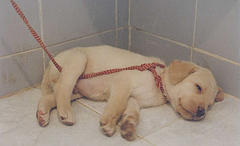 The first step in getting your new pup to walk on a leash is to start as soon as you get him home. Get him comfortable wearing a collar before going any further. A simple, leather collar will do fine. Put the collar on your pup while you are feeding or playing with him. This will distract him for awhile but don’t take it off, let him get used to it and settle down before removing it. After your pup is used to his new collar, it’s time to introduce the leash. Buy a simple, leather, lightweight leash .Clip the leash onto his collar, let him check it out and drag it around the house for awhile.
The first step in getting your new pup to walk on a leash is to start as soon as you get him home. Get him comfortable wearing a collar before going any further. A simple, leather collar will do fine. Put the collar on your pup while you are feeding or playing with him. This will distract him for awhile but don’t take it off, let him get used to it and settle down before removing it. After your pup is used to his new collar, it’s time to introduce the leash. Buy a simple, leather, lightweight leash .Clip the leash onto his collar, let him check it out and drag it around the house for awhile.
Pick up the leash and and walk around the house with him. Puppies usually love to follow you around so use this to your advantage but keep the training sessions short and fun for him. When he pulls or tugs, stop immediately. He has to learn that if he wants to continue walking, he must be at your side at all times. The leash should be loose. If he sits down, don’t yank him. Just call him over and give him a reward when he comes. Start walking again with your pup at your side. Before you know it he’s be ready to go outdoors!
Remember, your pets count!
Check out our six great internet stations!
THE EDGEWATER INTERNET RADIO NETWORK
Can you be allergic to one cat and not the other?
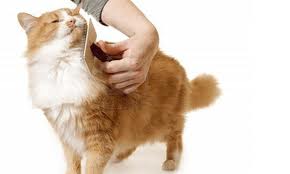 The answer to this question is “yes.” When I pet my older cat Mollie and then touch my eyes, my eyes will get red and very itchy almost immediately. If I pet Millie, my younger cat and then touch my eye, nothing at all happens. Our allergic reactions are from the saliva which is in the dander produced by your feline friend. Some cats produce more dander than others. If you have a reaction from touching or petting your cat, wash your hands immediately after touching her. Brush your cat regularly to keep the dander down and wipe her down with a damp cloth. This will not solve your allergy problem but it can help it a bit.
The answer to this question is “yes.” When I pet my older cat Mollie and then touch my eyes, my eyes will get red and very itchy almost immediately. If I pet Millie, my younger cat and then touch my eye, nothing at all happens. Our allergic reactions are from the saliva which is in the dander produced by your feline friend. Some cats produce more dander than others. If you have a reaction from touching or petting your cat, wash your hands immediately after touching her. Brush your cat regularly to keep the dander down and wipe her down with a damp cloth. This will not solve your allergy problem but it can help it a bit.
Remember, your pets count!
Great radio stations on our internet radio network!
THE EDGEWATER INTERNET RADIO NETWORK
Cat aggression toward another cat
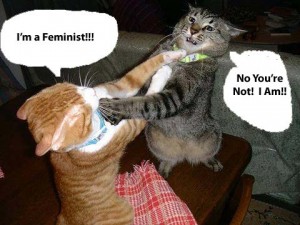 As I’ve mentioned, I have two cats. My older cat Mollie doesn’t like my younger cat, Millie. I am still trying to cope with this problem. Millie is petrified of Mollie and actually tries to run and hide from her. I have two food bowls, two litter boxes and more than one of everything else. Millie waits until Mollie is done eating before going to her bowl. Mollie hisses and chases Millie when she passes. Mollie is extremely attached to me and seems to try to protect me. I feel bad because I feel that Millie deserves a more peaceful life. She does know that she is loved and cared for but she’s always looking behind to ensure that she is not being followed by the big “cookie monster” as my roommate calls her!
As I’ve mentioned, I have two cats. My older cat Mollie doesn’t like my younger cat, Millie. I am still trying to cope with this problem. Millie is petrified of Mollie and actually tries to run and hide from her. I have two food bowls, two litter boxes and more than one of everything else. Millie waits until Mollie is done eating before going to her bowl. Mollie hisses and chases Millie when she passes. Mollie is extremely attached to me and seems to try to protect me. I feel bad because I feel that Millie deserves a more peaceful life. She does know that she is loved and cared for but she’s always looking behind to ensure that she is not being followed by the big “cookie monster” as my roommate calls her!
I’m convinced that there is no solution to this. I just have to make life as comfortable and pleasant for both cats. I give both cats lots of attention. Some people ask me what to do in a situation like this. My answer is get two of everything and make sure that each cat has enough space. If you have an upstairs, you can keep one cat’s things upstairs and the other’s downstairs. This won’t solve the problem but might help prevent “cat fights.”
Remember, your pets count!
Check out our radio stations. They’re great to listen to at work!
THE EDGEWATER INTERNET RADIO NETWORK